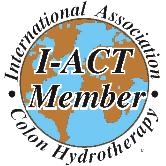Nectarines
had the highest percentage of samples test positive for pesticides
(97.3 percent), followed by peaches (96.7 percent) and apples (94.1
percent).
Peaches had the highest likelihood of multiple
pesticides on a single sample - 87.0 percent had two or more pesticide
residues — followed by nectarines (85.3 percent) and apples (82.3
percent).
Peaches and apples had the most pesticides detected on
a single sample, with nine pesticides on a single sample, followed by
strawberries and imported grapes where eight pesticides were found on a
single sample of each fruit.
Peaches had the most pesticides
overall, with some combination of up to 53 pesticides found on the
samples tested, followed by apples with 50 pesticides and strawberries
with 38.
Celery
had the highest of percentage of samples test positive for pesticides
(94.1 percent), followed by sweet bell peppers (81.5 percent) and
carrots (82.3 percent).
Celery also had the highest likelihood
of multiple pesticides on a single vegetable (79.8 percent of samples),
followed by sweet bell peppers (62.2 percent) and kale (53.1 percent).
Sweet
bell peppers had the most pesticides detected on a single sample (11
found on one sample), followed by kale (10 found on one sample), then
lettuce and celery (both with nine).
Sweet bell peppers were the
vegetable with the most pesticides overall, with 64, followed by
lettuce with 57 and carrots with 40.
Over half of the tomatoes (53.1 percent), broccoli (65.2 percent), eggplant (75.4 percent), cabbage (82.1 percent), and sweet pea (77.1 percent) samples had no detectable pesticides. Among the other three vegetables on the least-contaminated list (asparagus, sweet corn, and onions), there were no detectable residues on 90 percent or more of the samples.
Multiple pesticide residues are extremely rare on any of these least contaminated vegetables. Tomatoes had the highest likelihood, with a 13.5 percent chance of more than one pesticide when ready to eat. Onions and corn both had the lowest chance with zero samples containing more than one pesticide.
The greatest number of pesticides detected on a single sample of any of these low-pesticide vegetables was five (as compared to 11 found on sweet bell peppers, the vegetable with the most residues on a single sample).
Broccoli had the most pesticides found on a single type of vegetable, with up to 28 pesticides, but far fewer than the most contaminated vegetable, sweet bell peppers, on which 64 were found.
Fewer than 10 percent of pineapple, mango, and avocado samples had detectable pesticides on them, and fewer than one percent of samples had more than one pesticide residue.
Though 54.5 percent of grapefruit had detectable pesticides, multiple residues are less common, with only 17.5 percent of samples containing more than one residue. Watermelon had residues on 28.1 percent of samples, and just 9.6 percent had multiple pesticide residues.
From The Environmental Working Group

